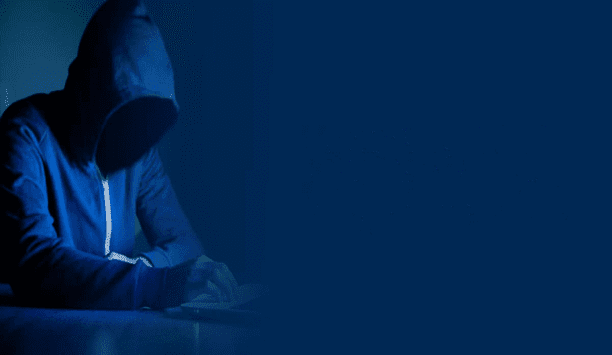Nobody really likes to be in hospital. But knowing that you're in good hands makes everything a little bit easier. The patients at the Maria Hilf Clinics in Mönchengladbach can be sure of that. After all, each hospital that the clinic operates, Maria Hilf, St. Franziskus and Kamillianer, has a very thorough approach patient care.
The Whole Person"We aim to provide each and every patient with the most modern medical treatment available," said Stefan Bahun, head of security, while explaining the concept behind the Maria Hilf Clinics. "But we don't really want to focus on just the illness, we want to look at the whole person - along with the illness. That's why personal attention plays such an important role." This has been their motto for more than 150 years now, since two Franciscan monks from the Netherlands came to Mönchengladbach on July 24, 1854 to care for the sick and to take over the administration of the Catholic orphanage.
The city hospital, with a total of 800 beds, admits approximately 28,000 patients and treats another 100,000 outpatients a year, making it the largest Catholic hospital in the bishopric of Aachen. Close to 1,600 employees, including 190 doctors and 800 employees in nursing service make sure that the patients are well taken care of. As an academic teaching hospital belonging to the RWTH Aachen, the Maria Hilf Clinics also train medical students.
Most Modern (Medical) Technology
Patients are treated according to the latest scientific findings and using the most modern medical technology. To improve the security of the patients and employees, the clinics have also put a particular focus on high-tech: since the summer of 2004, MOBOTIX cameras have provided constant monitoring of the gates and other critical points on the clinic premises.
Working Profitably"Personal care cannot be covered by usual medical insurance. But, in order to meet the standards of our humanitarian, personal approach, we have to work as profitably as possible in other areas", said Stefan Bahun.
One area that was not operating economically in the past was the nighttime gate. With lower visitor frequency and fewer emergencies or patients requiring transport compared to daytime, the night shift was not working to full capacity. That's when the idea was born to take advantage of technology and to centralize the night personnel at one of the three locations. The capacity that would be freed up this way could be invested in the day shift, which has had to master an ever-increasing number of tasks.
High-Tech Gate

"You seldom find the traditional desk clerk in clinics any more," explained the head of security. "Anyone who wants to work in the field of the ‘gate/information desk' nowadays is required to have good qualifications and a lot of experience: he/she has to be communicative, competent, friendly, able to work under pressure and also has to have computer skills." In addition to the telephone system, this work also involves managing the parking guidance system, camera surveillance and patient information. And this is also where all the alarm messages end up, whether it is a stuck elevator, problems with the oxygen supply or even a fire alarm. These functions also had to be taken into consideration for the centralization of the night gates. With respect to data communications, it is also an advantage that all three hospitals are connected by a point-to-point radio system.
Controlled Access
Access control at the locations without a gatekeeper in the night hours remained a problem. "It is still necessary for emergency services and patients to be able to enter the clinics at night. But we cannot simply leave the buildings open to anyone. And communication via an intercom system alone just doesn't do the job." Stefan Bahun realized that this problem could only be solved by installing a powerful digital camera system. "Although we already had video technology, this analog system proved unsuitable for what we really needed. And because the buildings were already equipped with a good computer infrastructure with a powerful network, we decided to take advantage of that for the camera solution."
And so the search began for a system able to transmit optimum images with low data requirements. "This condition was a prerequisite because the point-to-point radio system is not able to accommodate larger files," explained the head of security.
Easy Operation
Then someone happened to stumble across MOBOTIX in the trade press. "I was fascinated by the many different features the cameras offer," remembered Bahun. "And of course, we were particularly interested in cameras that allow excellent images even at night. This made the MOBOTIX network cameras the ideal solution."
"Another important factor influencing our decision," continued the head of security, "was easy operation. In this respect, MOBOTIX already offers all the features we need, along with camera control via an Internet browser. But we also wanted to make things as simple as possible for the desk clerks." This is where, at the suggestion of the Kaiserslautern-based manufacturer, uniserve Internet & Multimedia GmbH came into play. Uniserve developed "WINSTON", a camera management software solution that can be operated ergonomically, extremely easily, quickly and intuitively. This software solution also includes a floor plan as well as a camera overview and allocates special functions, such as a door opener, directly to the appropriate camera image.
Central MonitoringObviously, this solution was a big hit with the customer. Today, there are a total of 14 MOBOTIX cameras in operation at the three Maria Hilf clinic locations, thus providing central monitoring for all the entrances and access points. Other critical points, such as the cash desks and banking machines or the waiting room in the emergency room, are also under the watchful eye of the front desk staff.

Thanks to event control, which can be activated via the predefined fields in each camera image, it is possible to identify and record specific events. For reasons of security and documentation, these images are stored for 72 hours and can only be viewed if further investigation is required. Consequently, each of the three locations has been equipped with its own image server, which takes over the storage function of the cameras.
"The Kamillaner Hospital has not been staffed at the front desk for ten hours at night since August 2004 and everything has been working perfectly," Stefan Bahun summarized. "We also plan to introduce the concept at St. Franziskus soon to complete the centralization project. On the whole, we are very pleased to say that this camera technology has increased the security level in our clinics. The investment has certainly paid off and I am very happy."






